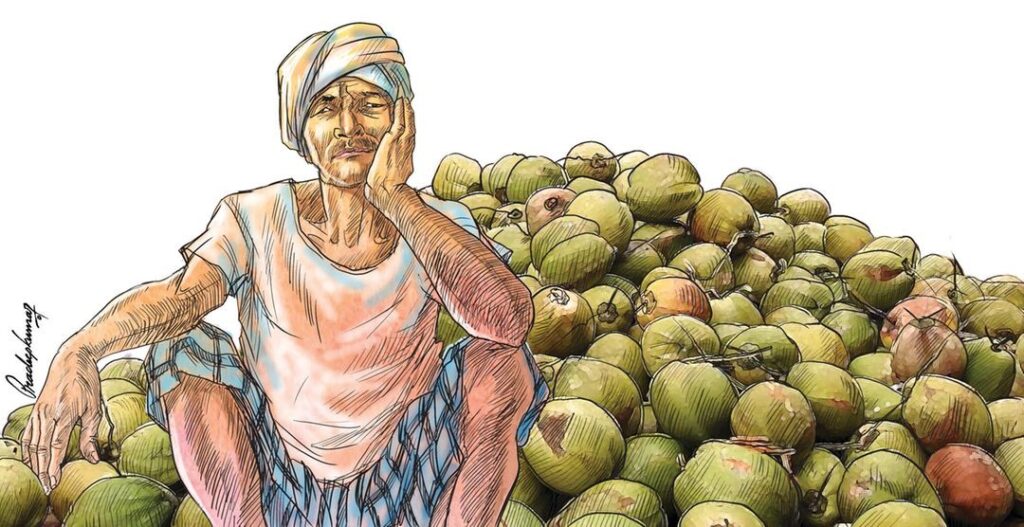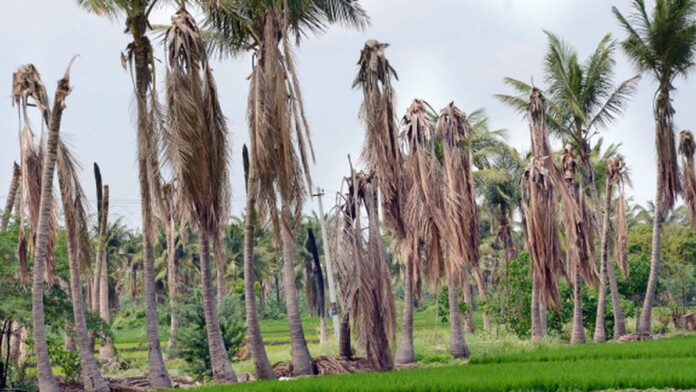Is it policy paralysis or a sheer lack of imagination? Is it that, for the Indian government, industry comes first, consumers come second and the farmers last? Balancing the interests of all three players is tough for anyone. Balancing is easier if the government – both central and state governments – have a medium to long-term vision and the will to execute plans that serve everyone’s interest – not one at the expense of the other.
Climate change has added another level of complexity for policymakers. Severe heat in South India, where 90 per cent of India’s coconut is grown, since 2023, has shrunk yields. Average temperatures beyond 35 degrees Celsius attract several pests. It results in higher costs and lower yields – a double whammy. To survive, agronomic and genetic adaptation techniques such as mulching, inter-cropping, and improved irrigation methods to maintain soil moisture, are needed to combat the impact of climate change on coconut plantations.
Market prices of coconut water and coconut oil have increased by more than 20 per cent since January 2024. This should be good news for farmers, but the cost of their production has gone up much more than that. Low price of coconut product prices in 2022 and 2023 have left most small farmers in distress. Schemes like crop insurance do not apply to coconuts for strange reasons. The Farmer Producers Organizations have made no real impact on the ground.
Farmers have been vocal in their protests in recent months. They are demanding higher minimum support prices for copra from which coconut oil is made. Governments are currently offering some support, which farmers say is way below their expectations. After the liberalization of mandis (marketplaces) in 2021, where farmers had a better say because of the power of collective bargaining, private players are dealing with farmers directly. While this is good for large producers, the smaller ones are getting a raw deal. Whether this is good for the consumers remains to be seen. Like in most commodities, uncontrolled private players result in hoarding with artificially high prices.

Two key policy decisions can help rejuvenate the coconut sector in India – imposition of an import duty on palm oil imports and start providing coconut oil in the public distribution system.
When the government can subsidize palm oil, why can’t it also provide coconut oil, farmers ask? The cost to the government could be higher in the beginning, but with better supply management, the difference in the cost of subsidizing palm oil and coconut oil is likely to narrow. It will boost demand for Indian coconut oil, and the price can come down with greater offtake.
The central government’s mission to promote palm oil cultivation to reduce dependence on imports is a bad policy on many fronts – results in the last decade have shown that palm oil cultivation has failed miserably in India. By forcing it on India’s North-East India which has pristine forests with a vibrant tribal population, India is making a major blunder.
Like the coffee and tea sectors, the coconut sector needs to be given plantation status. This will attract large investments, which currently are stifled by rigid laws ostensibly in favor of small farmers.
Should the government support big business interests, or should it think of customer interests, or should it also support farmers? For now, farmers should be the priority if India wants to build a vibrant coconut sector.










